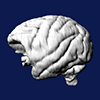-
-
sample data

|
-
-
-
sample data

|
-
sample publication

|
|
Architecture and connections of retrosplenial area 30 in the rhesus monkey (Macaca mulatta).
Eur J Neurosci. 1999 Jul;11(7):2506-18. Morris R, Petrides M, Pandya DN.
Because of the sharp curvature of the retrosplenial region around the splenium of the corpus callosum, standard coronal sections are not appropriate for architectonic analysis of its posteroventral part. In the present study, examination of the posteroventral retrosplenial region of the rhesus monkey in sections that were orthogonal to its axis of curvature (and therefore appropriate for architectonic analysis) has permitted definition of its architecture and precise extent. This analysis demonstrated that areas 29 and 30 of the retrosplenial cortex, as well as adjacent area 23 of the posterior cingulate cortex, extend together as an arch around the splenium of the corpus callosum and maintain their topographical relationship with one another throughout their entire course. Injections of anterograde and retrograde tracers confined to retrosplenial area 30 revealed that this area has reciprocal connections with adjacent areas 23, 19 and PGm, with the mid-dorsolateral part of the prefrontal cortex (areas 9, 9/46 and 46), with multimodal area TPO in the superior temporal sulcus, as well as the posterior parahippocampal cortex, the presubiculum and the entorhinal cortex. There are also bidirectional connections with the lateroposterior thalamic nucleus, as well as the laterodorsal and the anteroventral limbic thalamic nuclei. The connectivity of area 30 suggests that it may play a role in working memory processes subserved by the mid-dorsolateral frontal cortex in interaction with the hippocampal system.
Neuroanatomical Connectivity References
|
|

